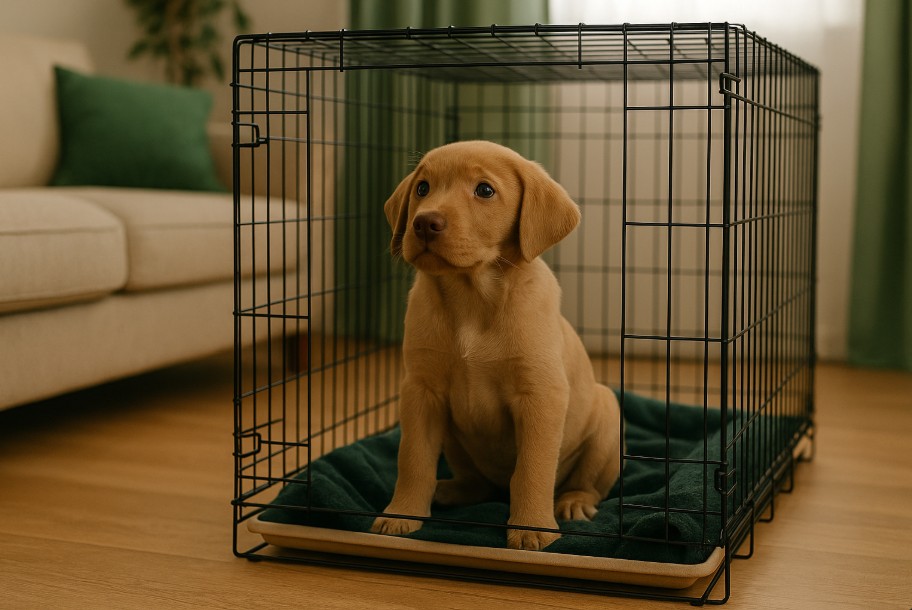Crate training is one of the most effective tools for raising a well-adjusted dog. Far from being a punishment, a crate—when introduced properly—can become your puppy’s safe space. For Canadian families, crate training is especially useful for managing long winters indoors, house training in condos or apartments, and ensuring your pup feels secure when left alone.
This guide walks you through the essentials of crate training, with positive, step-by-step strategies to make crate time a stress-free experience.

Read our Separation Anxiety Guide for more on helping your dog feel calm when left alone.
Crate training, when done with patience and positivity, creates a safe, secure, and happy space for your puppy. It helps with house training, reduces anxiety, and builds good habits that last a lifetime.
Hit the trails with confidence! Our guide to the best dog leashes for hiking in Canada breaks down the top leash types - from hands-free to reflective - and shares expert tips for safe, comfortable adventures with your pup. Featuring trusted Canadian gear from Rocky Mountain Dog, this post helps you choose durable, trail-tested leashes built for every season and terrain.
Discover why Labradors thrive on fresh, whole-food meals tailored to their active lifestyle. This guide breaks down the best fresh dog food options for Labrador Retrievers in Canada, explains why balanced nutrition matters, and highlights top NutriCanine recipes made with human-grade ingredients. Learn how to transition your Lab safely to fresh food, manage their calories, and support long-term health - all while keeping mealtime easy and convenient with Canadian delivery from NutriCanine.
This article explores the best greeting exercises to stop dogs from jumping, barking, or biting when meeting people. It explains why dogs act out during greetings - often from excitement or overstimulation - and provides step-by-step training tips to promote calm behavior.
Discover practical and creative ways to keep your dog active indoors this winter. From games and training to DIY enrichment, keep your Canadian pup happy and healthy no matter how low the temperature drops.
When winter hits, knowing your dog’s limits is key. This vet-informed guide explains how cold is too cold for different breeds, the warning signs of overexposure, and simple tips to keep your pup warm and safe during chilly walks.